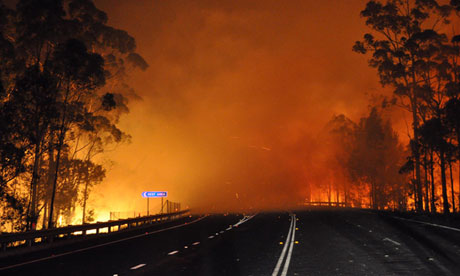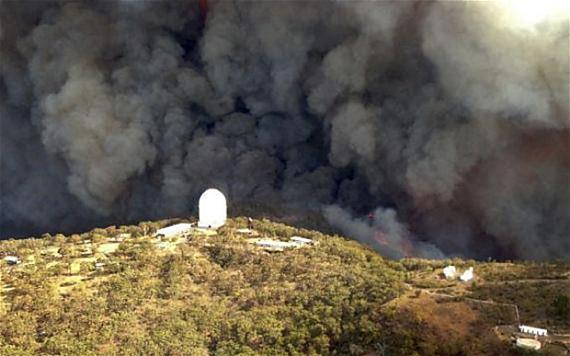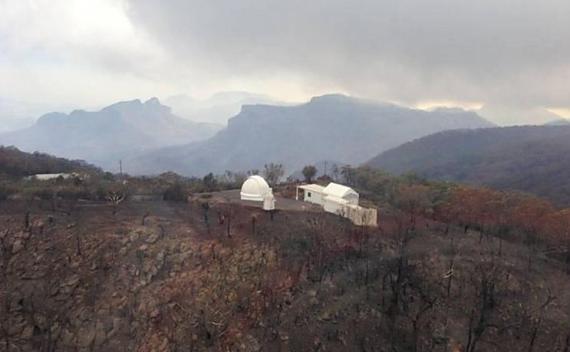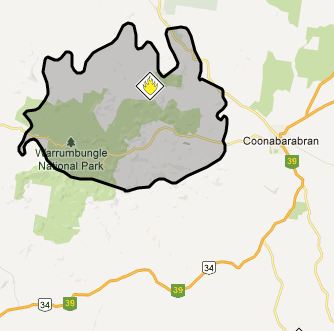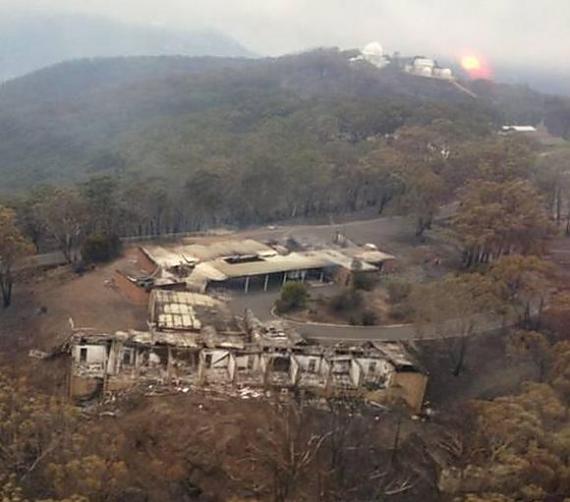A facilitated learning analysis has been released for a serious injury that occurred while firefighters were taking suppression action on an extremely steep slope above the Columbia River Gorge on the border between Washington and Oregon.
That portion of the Milepost 66 fire was too steep for firefighters to work without some form of protection or a fall arrest device. An engine crew from the Columbia River Gorge National Scenic Area certified in tree climbing and low angle rope use was assigned to work the slope using ropes. The CRGNSA is managed by the U.S. Forest Service.
Two crew members rappelled down the slope, taking action on hot spots they ran across. They arrived at a bench and mopped up more of the fire. When finished, they rappelled down to the highway below. What happened next is in the excerpt below:
…As crew member #2 reached the edge, or lip, of the 70’ cliff, he though “it’s a little loose,” meaning that rock was falling from the slope below the bench. The loose rock was also noticed by someone watching from below. Crew member #2 continued his descent down the rope when his hand tool got stuck about 20’ below the lip. He reached back to make an adjustment and continue his descent. At the halfway point crew member #2 called crew member #1, “I just got hit by a rock.” Crew member #3 was at the HWY taking photos and witnessed a rock fall and hit crew member #2. Crew member #3 didn’t see where the rock came from but estimated the rock was the size of a small melon or softball. This happened approximately 30’ above the HWY. Crew member #2 paused and then continued the descent to the HWY. Crew member #3 called out to #2, “are you OK?”, received no response and started moving toward #2. By the time crew member #3 arrived, #2 said he wasn’t doing well. Crew member #2 was bleeding and had some deformity on the left side of his face. Crew member #3 removed #2’s harness and called for the trauma kit from the engine. Crew member #3 said it was obvious that Crew member #2 was in serious pain.
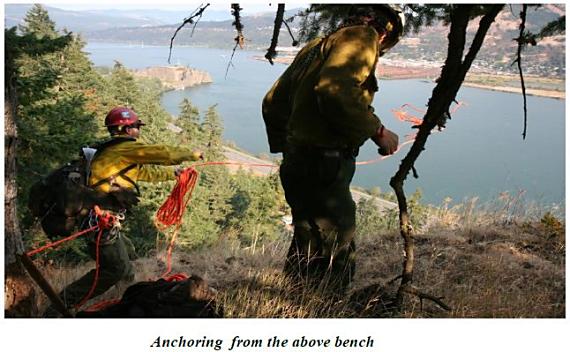
According to the report, the injured firefighter was treated on scene by two paramedics and transported to a hospital within 17 minutes of the injury. There are no details provided about the diagnosis of the injury or the patient’s recovery, but the firefighter was admitted to the Hood River County Hospital and later referred to Oregon Health Science University hospital for a more complete evaluation.
Some of the conclusions, lessons learned, and suggestions in the report included:
- Implement the use of heat-resistant ropes.
- The applicability of the USFS Tree Climbing training to the fire environment Rope Belay Program should be more fully evaluated.
- There is a need for a written operating plan, SOP’s, safety checklist and/or risk analyses.
- Depending on the level of risk identified by the team and duty officer during the risk analysis process of each particular mission, approval for the operation might be bumped up to a higher management level (Fire Engine Operator -> Fire Management Officer -> Agency Administrator).








